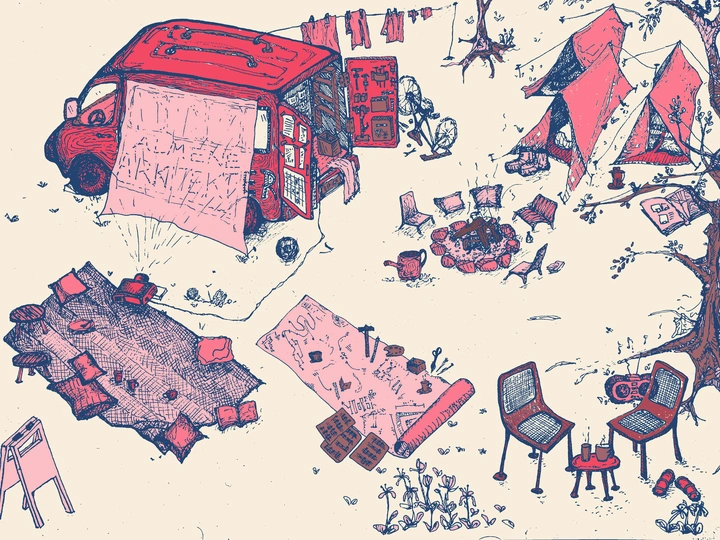Groundwork // resituating architectural practices

Primarily, I work as a research assistant at the Royal Danish Academy, but one can find me in many other contexts. I work with children, teach dance, organise demonstrations, and teach architecture and design to international students. My work takes place in an office, on playgrounds, in the streets, and at home. This spectrum—from an introverted place of writing and reflection, to an extroverted approach of conversations, questions, and seeking new connections—allows for resilient, careful practices of architecture.
I come originally from the United States, but have established myself in Copenhagen over the last few years, through learning a new language and developing an intense network of friends, acquaintances, and collaborators.
I worked for some years as a practicing architect in the US. The standard ways of working I experienced there have become the impetus for my research, as I hope to find practices of architecture that are radically caring, responsible, and inclusive. It requires grappling with the ethics of our global political and economic systems, while also remembering to ground ourselves in the places we live and work.
Having been asked to include “notable achievements,” I consider leaving the stability of my job as an architect to be most important. It has given me the chance to achieve other goals, and to find connections in unexpected places. Now, the way I practice architecture takes point of departure in minimizing interventions, in listening to the people and organisms that live in the place, and in collaborating as much as possible. There isn’t space for articulating personal or individual accomplishments. Even though I apply here alone, it is for the chance to work with others, with LINA partners, with folks along the way, and to share these new connections with my existing networks.
Context: This work emerged from witnessing the violent impacts of architecture in Denmark, where social housing has been controversially transformed. Residents are forcibly relocated, housing is sold to private developers, tenant democracies are overturned, buildings are demolished, communities are dispersed. This project responds by developing careful, attentive architecture practices, focusing on how we conduct field work.
Problem: Site visits and field work tend to involve visiting the place a few times, taking photos and measurements, perhaps sketching existing buildings or talking with a few stakeholders. But to face the social, ecological, and political crises of our time, this superficial understanding of place is insufficient to creating healthy, inclusive, decolonial environments.
Idea: This work is embodied as (and symbolised by) a mobile studio—an old bus or a cargo bike—traveling through sub-urban and rural lands. The studio is a place for collaboration, repair, and exchange. It would allow for architects to be grounded in a place, of a place, for a significant amount of time. Understanding what it means to be an architect, who is not bound to a desk but embedded in site, allows for cultivating non-extractive practices.
Alternative fieldwork methods developed so far:
(1) Creating in-depth stakeholder diagrams
(2) Developing site writing, painting, and listening practices
(3) Facilitating drawing workshops with students
(4) Composting and building with soil
Proposed next steps:
(1) Developing the mobile studio (physically and socially)
(2) Collaborative workshops with architectural organisations across the EU
(3) Drafting counter proposals to existing building regulations
(4) Learning more maintenance and repair practices
Impact: By shifting to caring, contextualised practices, this project empowers architects to develop healthier, non-extractive relations with the physical, social, and ecological grounds they work within.